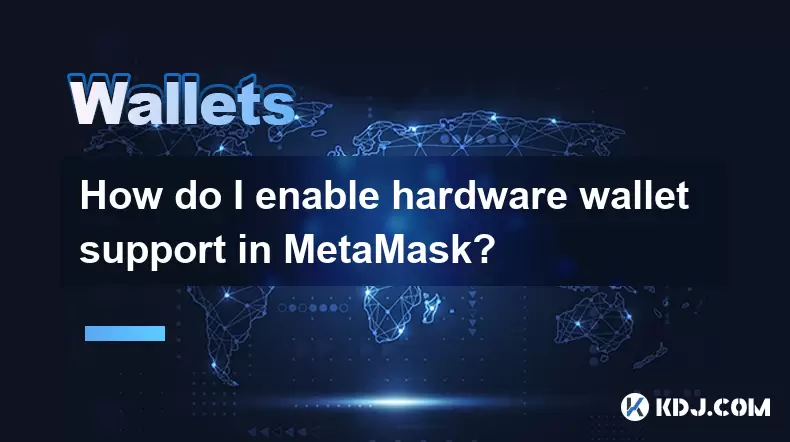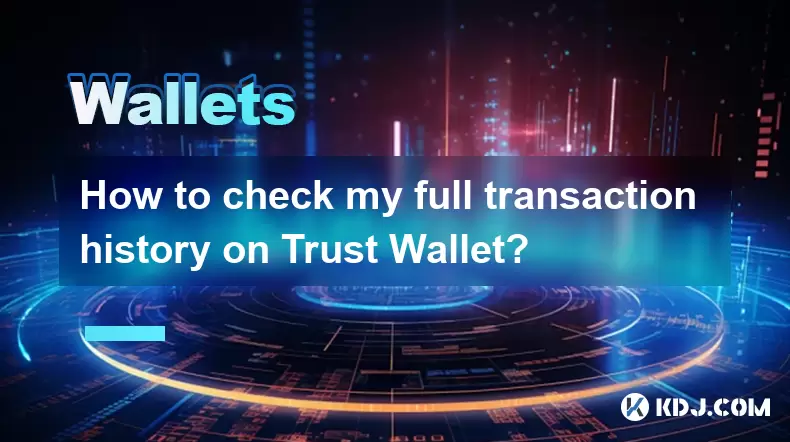-
 Bitcoin
Bitcoin $114400
1.32% -
 Ethereum
Ethereum $3499
2.20% -
 XRP
XRP $2.922
4.26% -
 Tether USDt
Tether USDt $0.0000
0.03% -
 BNB
BNB $752.6
1.53% -
 Solana
Solana $161.8
1.64% -
 USDC
USDC $0.9999
0.01% -
 TRON
TRON $0.3267
1.32% -
 Dogecoin
Dogecoin $0.1991
3.02% -
 Cardano
Cardano $0.7251
3.29% -
 Hyperliquid
Hyperliquid $38.32
3.36% -
 Stellar
Stellar $0.3972
7.58% -
 Sui
Sui $3.437
2.74% -
 Chainlink
Chainlink $16.29
3.65% -
 Bitcoin Cash
Bitcoin Cash $545.3
3.70% -
 Hedera
Hedera $0.2482
7.49% -
 Ethena USDe
Ethena USDe $1.001
0.03% -
 Avalanche
Avalanche $21.40
2.02% -
 Toncoin
Toncoin $3.579
1.56% -
 Litecoin
Litecoin $109.3
2.20% -
 UNUS SED LEO
UNUS SED LEO $8.951
-0.18% -
 Shiba Inu
Shiba Inu $0.00001220
2.75% -
 Polkadot
Polkadot $3.613
2.99% -
 Uniswap
Uniswap $9.173
3.78% -
 Monero
Monero $302.6
2.62% -
 Dai
Dai $0.0000
0.00% -
 Bitget Token
Bitget Token $4.320
1.52% -
 Pepe
Pepe $0.00001048
3.40% -
 Cronos
Cronos $0.1314
4.33% -
 Aave
Aave $259.4
3.54%
How do I enable hardware wallet support in MetaMask?
MetaMask supports hardware wallets like Ledger and Trezor, offering enhanced security by storing private keys offline while enabling seamless dApp interactions.
Jun 16, 2025 at 04:35 pm

What is Hardware Wallet Support in MetaMask?
Hardware wallet support in MetaMask refers to the integration of physical devices like Ledger or Trezor with the MetaMask browser extension or mobile app. These hardware wallets provide an extra layer of security by storing private keys offline, significantly reducing the risk of theft from online attacks. Enabling this feature allows users to interact with decentralized applications (dApps) while maintaining high levels of security for their digital assets.
MetaMask has long supported software wallets that store private keys on your device, but integrating a hardware wallet offers a more secure alternative for managing cryptocurrencies and interacting with blockchain-based platforms.
Preparing Your Hardware Wallet
Before enabling hardware wallet support in MetaMask, ensure you have the following:
- A compatible hardware wallet such as Ledger Nano S, Ledger Nano X, or Trezor Model T.
- The latest version of MetaMask installed either as a browser extension or via the mobile app.
- The device drivers for your hardware wallet properly installed.
- Your hardware wallet should be initialized and secured with a recovery phrase.
Connect your hardware wallet to your computer using a USB cable, and make sure the relevant firmware and applications are updated. For example, if you're using a Ledger device, install the Ethereum app through Ledger Live before proceeding.
Connecting Your Hardware Wallet to MetaMask (Desktop)
To enable hardware wallet support in MetaMask on desktop browsers like Chrome or Firefox:
- Open the MetaMask extension in your browser.
- Click on your account profile in the top-right corner.
- Select "Connect Hardware Wallet" from the dropdown menu.
- Choose your hardware wallet brand from the list — options include Ledger and Trezor.
- Follow the prompts displayed on-screen to detect your connected device.
- Grant permission for MetaMask to access your wallet by confirming on the hardware wallet’s screen.
- Once detected, select the accounts you want to import into MetaMask.
- Click "Connect" to complete the process.
After connecting, your selected accounts will appear in MetaMask, and you’ll be able to sign transactions using your hardware wallet.
Using MetaMask Mobile with a Hardware Wallet
MetaMask Mobile supports hardware wallet integration via Bluetooth connectivity, primarily with Ledger Nano X devices.
- Ensure your Ledger Nano X is charged and has Bluetooth enabled.
- Open the Ledger Live app and activate Bluetooth mode.
- Launch the MetaMask Mobile app and tap the profile icon.
- Go to "Settings" > "Wallets" > "Connect Hardware Wallet."
- Select "Ledger" and follow the instructions to pair your device via Bluetooth.
- Confirm the connection on both your phone and the Ledger Nano X.
- Choose the Ethereum account(s) you wish to import.
- Tap "Connect" to finalize the setup.
Once connected, you can securely manage your funds and interact with dApps directly from your mobile device without exposing your private keys.
Signing Transactions with a Hardware Wallet in MetaMask
Once your hardware wallet is successfully linked to MetaMask, signing transactions becomes straightforward. When you initiate a transaction from a dApp or within MetaMask:
- Review the transaction details carefully.
- MetaMask will prompt you to confirm the action using your hardware wallet.
- On your hardware wallet screen, navigate using the buttons and press both simultaneously to approve.
- The transaction will then proceed and be broadcasted to the network.
This method ensures that no sensitive data is exposed to your browser or device. Since the private key never leaves the hardware wallet, it remains protected from potential malware or phishing attempts.
Troubleshooting Common Issues
If you encounter issues during the connection process, consider the following troubleshooting steps:
- Ensure your hardware wallet is fully charged and recognized by your computer or mobile device.
- Reinstall or update the firmware and apps on your hardware wallet using its official software (e.g., Ledger Live or Trezor Suite).
- Restart both the hardware wallet and MetaMask application.
- Use a different USB port or cable if you're experiencing detection problems.
- If using a browser, try switching to a different one or disable any conflicting extensions.
- For mobile connections, make sure Bluetooth permissions are granted for MetaMask.
If none of these steps resolve the issue, consult the support documentation provided by your hardware wallet manufacturer or reach out to their customer service team.
Frequently Asked Questions
Can I use multiple hardware wallets with MetaMask?
Yes, MetaMask allows you to connect multiple hardware wallets. You can switch between them by navigating to the account menu and selecting "Connect Hardware Wallet" again. Each time you connect a new device, you can import specific accounts from that wallet into MetaMask.
Is it safe to connect my hardware wallet to MetaMask?
Connecting your hardware wallet to MetaMask is safe because the private keys remain stored on the hardware device itself. MetaMask acts only as an interface for signing transactions. As long as you verify each transaction on your hardware wallet and do not share your recovery phrase, your funds remain secure.
Do I need to keep my hardware wallet plugged in after connecting it to MetaMask?
For desktop use, your hardware wallet must remain connected while you are actively signing transactions. However, once the session ends, you can safely disconnect it. In the case of mobile Bluetooth pairing, your Ledger Nano X can stay connected wirelessly until manually disconnected.
Can I disconnect my hardware wallet from MetaMask later?
Yes, you can disconnect your hardware wallet at any time. Go to your account settings in MetaMask, find the option to remove the hardware wallet connection, and confirm. This will remove the imported accounts from MetaMask, but you can reconnect the wallet anytime by repeating the setup process.
Disclaimer:info@kdj.com
The information provided is not trading advice. kdj.com does not assume any responsibility for any investments made based on the information provided in this article. Cryptocurrencies are highly volatile and it is highly recommended that you invest with caution after thorough research!
If you believe that the content used on this website infringes your copyright, please contact us immediately (info@kdj.com) and we will delete it promptly.
- BCUT: Support Holds, Accumulation Hints at Potential Reversal
- 2025-08-04 10:50:12
- Bitcoin's Bullish Expansion: Decoding Bollinger Bands and Whale Bets
- 2025-08-04 10:55:12
- BlockDAG's Grand Finale: Auction Fever and the Dawn of a New Era
- 2025-08-04 10:30:12
- Kaia Files: Will South Korea Embrace a KRW-Pegged Stablecoin?
- 2025-08-04 10:30:12
- Kaspa, HBAR, and Cold Wallet: A New York Minute on Crypto's Latest Moves
- 2025-08-04 09:11:54
- Ethereum Whale Watch: Selling Pressure and Price Volatility
- 2025-08-04 09:11:54
Related knowledge

What is a watch-only wallet in Trust Wallet?
Aug 02,2025 at 03:36am
Understanding the Concept of a Watch-Only WalletA watch-only wallet in Trust Wallet allows users to monitor a cryptocurrency address without having ac...

How to fix a stuck pending transaction in Trust Wallet?
Aug 03,2025 at 06:14am
Understanding Why Transactions Get Stuck in Trust WalletWhen using Trust Wallet, users may occasionally encounter a pending transaction that appears t...

What is a multi-coin wallet in Trust Wallet?
Aug 03,2025 at 04:43am
Understanding Multi-Coin Wallets in Trust WalletA multi-coin wallet in Trust Wallet refers to a digital wallet that supports multiple cryptocurrencies...

How to switch between networks in Trust Wallet?
Aug 02,2025 at 12:36pm
Understanding Network Switching in Trust WalletSwitching between networks in Trust Wallet allows users to manage assets across different blockchains s...

How to check my full transaction history on Trust Wallet?
Aug 02,2025 at 09:24am
Understanding Transaction History in Trust WalletTrust Wallet is a widely used non-custodial cryptocurrency wallet that supports a broad range of bloc...

What are gas fees in Trust Wallet?
Aug 04,2025 at 06:14am
Understanding Gas Fees in Trust WalletGas fees in Trust Wallet refer to the transaction costs required to execute operations on a blockchain network. ...

What is a watch-only wallet in Trust Wallet?
Aug 02,2025 at 03:36am
Understanding the Concept of a Watch-Only WalletA watch-only wallet in Trust Wallet allows users to monitor a cryptocurrency address without having ac...

How to fix a stuck pending transaction in Trust Wallet?
Aug 03,2025 at 06:14am
Understanding Why Transactions Get Stuck in Trust WalletWhen using Trust Wallet, users may occasionally encounter a pending transaction that appears t...

What is a multi-coin wallet in Trust Wallet?
Aug 03,2025 at 04:43am
Understanding Multi-Coin Wallets in Trust WalletA multi-coin wallet in Trust Wallet refers to a digital wallet that supports multiple cryptocurrencies...

How to switch between networks in Trust Wallet?
Aug 02,2025 at 12:36pm
Understanding Network Switching in Trust WalletSwitching between networks in Trust Wallet allows users to manage assets across different blockchains s...

How to check my full transaction history on Trust Wallet?
Aug 02,2025 at 09:24am
Understanding Transaction History in Trust WalletTrust Wallet is a widely used non-custodial cryptocurrency wallet that supports a broad range of bloc...

What are gas fees in Trust Wallet?
Aug 04,2025 at 06:14am
Understanding Gas Fees in Trust WalletGas fees in Trust Wallet refer to the transaction costs required to execute operations on a blockchain network. ...
See all articles

























































































